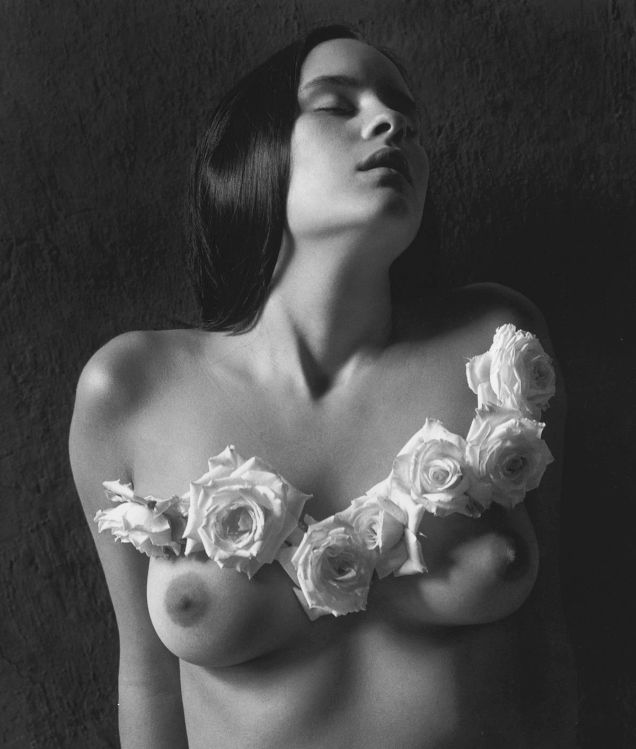Ethereal and dreamlike are words often used to describe the works of Mexican photographer, Flor Garduño. Emerging as an artist in Mexico around the end of the 1970’s, she witnessed a decade which saw a surge in Feminist art throughout the Western world. Studying Visual Art under her tutor, Kati Horna, Garduño’s work grew to be greatly influenced by Horna’s surrealist works and her representation of feminine experience.
Garduño’s poetic series, Inner Light, is a celebratory study of the female form. It praises difference as well as the power and ability of the body. The series documents objects from the natural world which echo the shapes of the women’s bodies she photographs with them. Saturated in symbolism, the series dances between representations of reality and fantasy. Fascinated by the indigenous ‘magical cultures’ of Mexico, Garduno’s photographs explore myths and legends, often utilising biblical references. Along with flowers and fig leaves, women are photographed with apples and snakes, thus referring to the stories of Genesis.
The photograph from Inner Light titled Vestido Eterno (1999), which translates as ‘eternal dress’, reveals a nude woman with roses draped gracefully across her chest. She is leaning against a wall, her neck arched back and face turning away from the light that is cast on her from below. The woman appears to be in a dream-like state, mimicking the position and expression of many traditional paintings of religious figures, such as Mary Magdalene. The dramatic chiaroscuro lighting in the black and white image is a common feature in much of Garduño’s work. The body is half illuminated and half absorbed by dark shadows, co-existing as night and day or good and evil. Similarly to the work of Frida Kahlo, Garduño’s work strives to illustrate both social consciousness and the unconscious mind. Undeniably influenced by Kahlo’s work, Vestido Eterno is an example of where Garduño uses symbolism to refer to nature as a ‘witness to life’, creating allegorical images which combine history with myth and fantasy.
Garduño’s photographs are sensual, however not overtly sexual. The objects used don’t attempt to conceal or hide the women’s nakedness. Leaves, fruit, flowers and animals are pictured alongside the women and frame the naked body as in its natural state. The series celebrates life and femininity. In one image, curling leaves mimic the curves of a body, in another, a pregnant woman is pictured inside a cocoon like frame. Garduño’s photographs reflect on the power and processes of nature, birth and life
(By Flora Miller)
